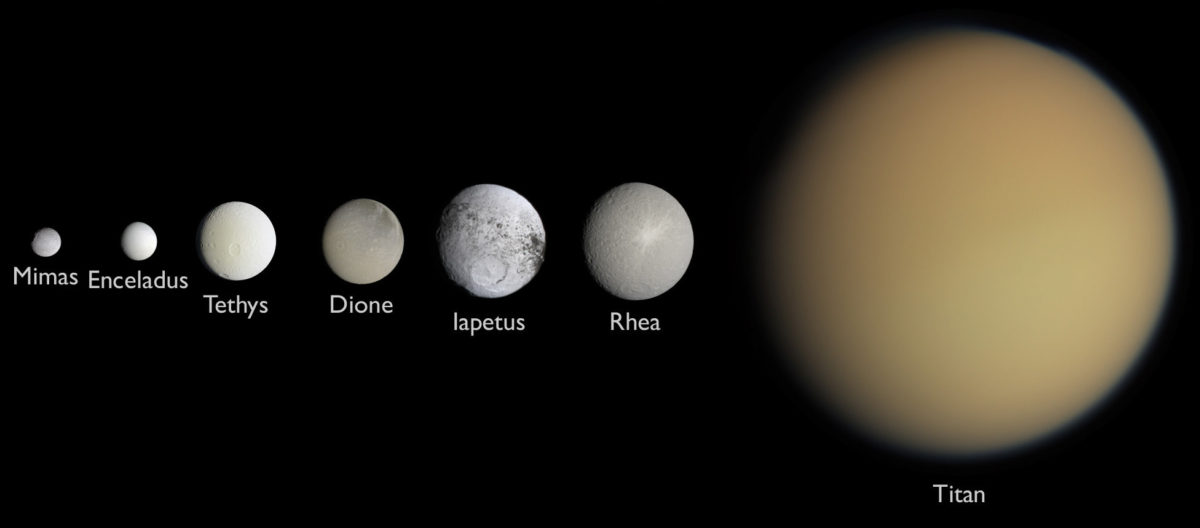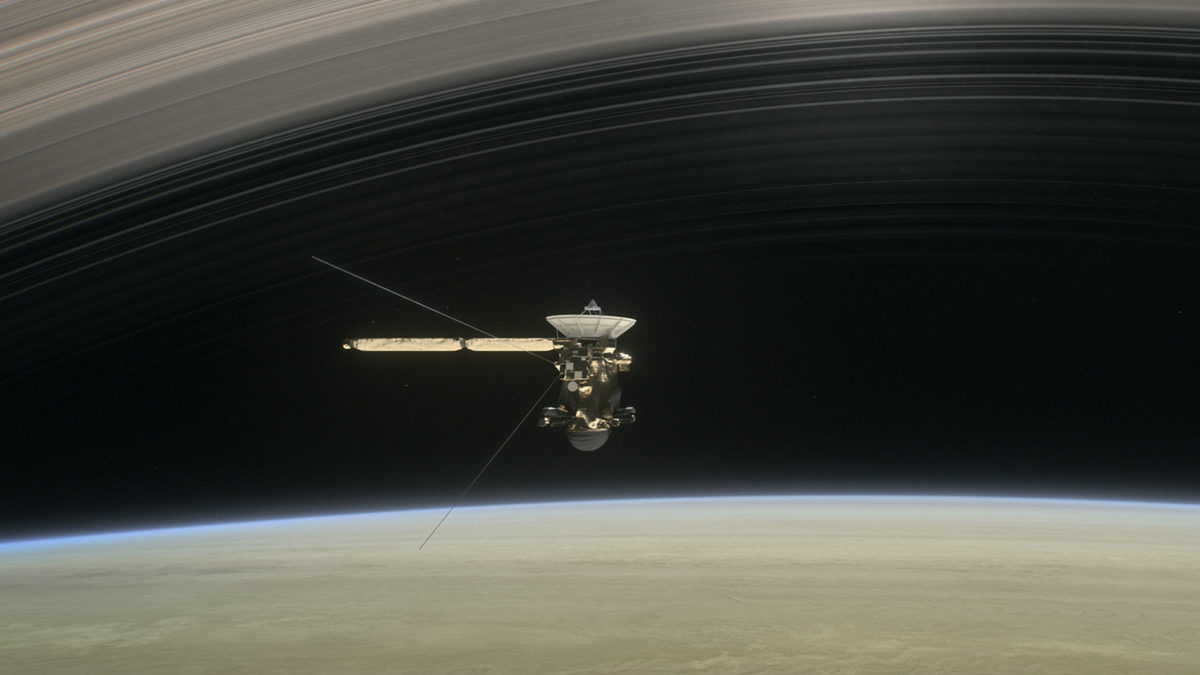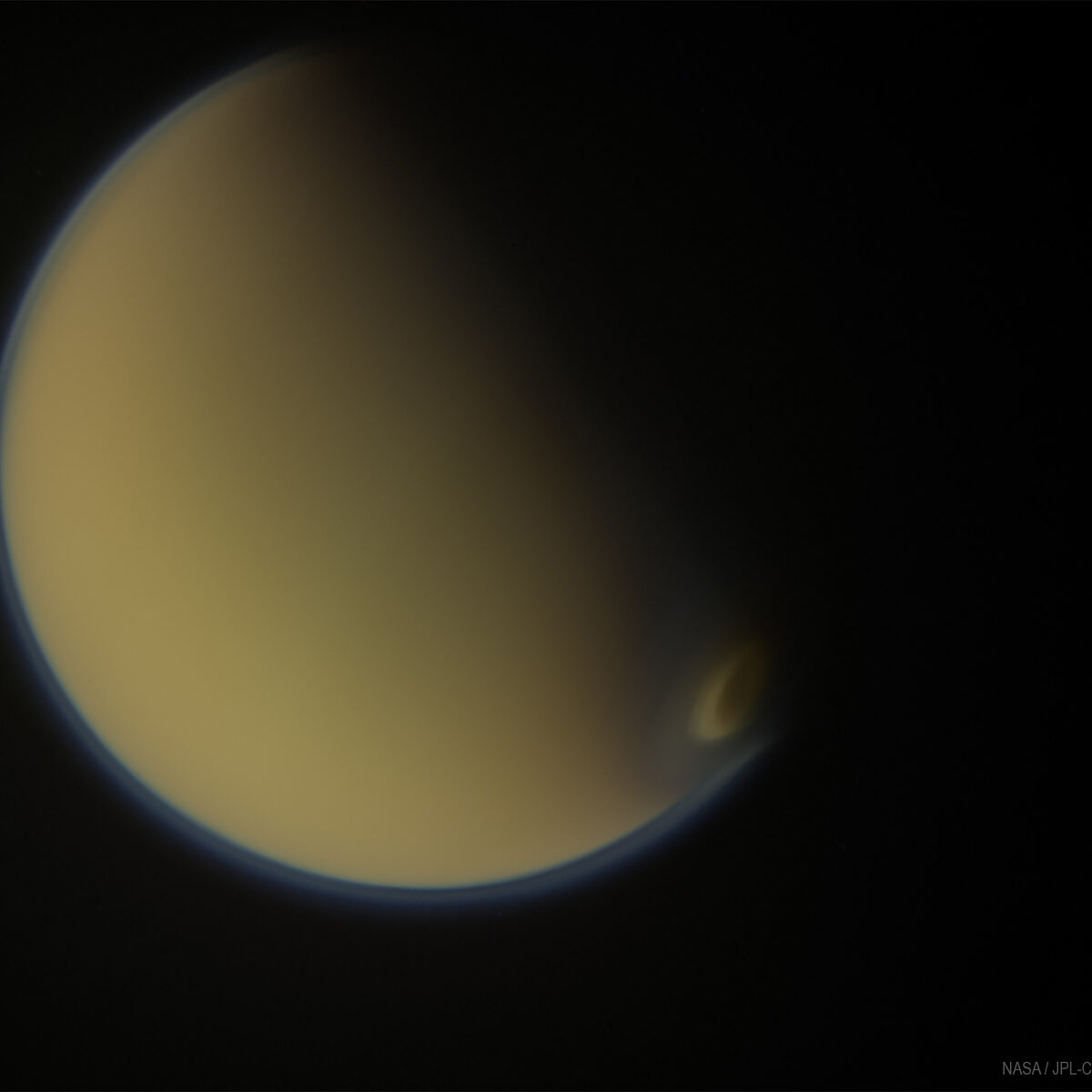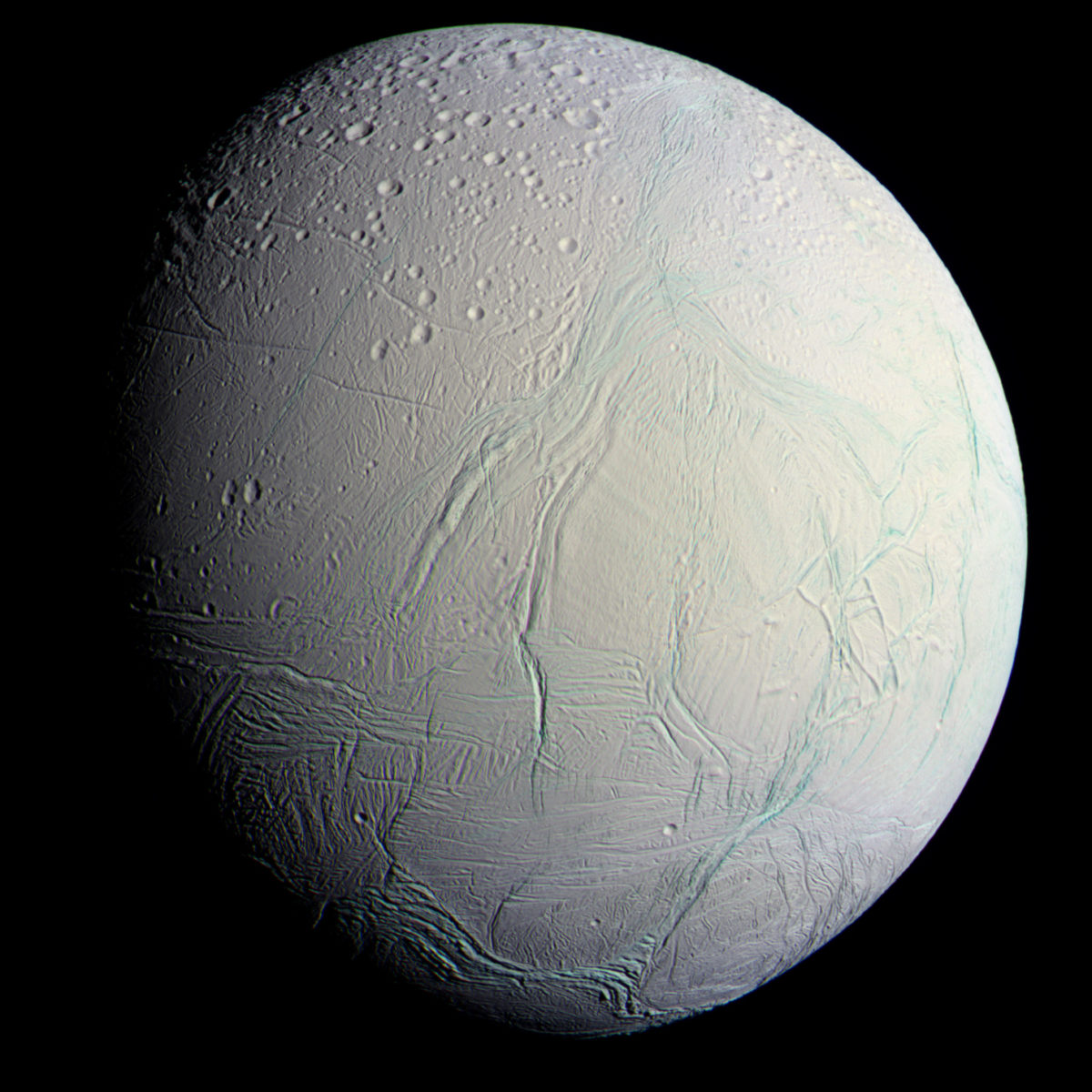Saturn, planet of rings, moons and more to explore
Highlights
- Saturn is the second-largest planet, boasting a stunning set of rings that can be seen in backyard telescopes.
- Its complex, planet-like moons make Saturn a solar system unto itself.
- NASA's Dragonfly mission, which is expected to launch in June 2027, will explore Saturn's largest moon, Titan.
Why we study Saturn
The real Lord of the Rings is Saturn, a massive outer planet boasting a set of rings about 27 Earths wide. Being a gas giant like Jupiter, Saturn shares many of its attributes: a strong magnetic field generated by churning metallic hydrogen deep inside, raging storms in its gaseous upper atmosphere, and a diversity of planet-like moons that are worlds unto themselves. Saturn’s rings and larger moons are visible even from small backyard telescopes.
Saturn was born right after Jupiter, roughly 4.5 billion years ago in the Solar System’s early days. Both planets probably formed closer to the Sun and then migrated to their current positions about 4 billion years ago. Their gravity likely lofted asteroids and comets all over the Solar System, some of which slammed into early Earth and may have brought water here.
We know of more than 5,000 exoplanets — worlds orbiting other stars — and the statistics show that most stars have planets. Many are Jupiter and Saturn-like worlds close to their stars, supporting the idea that our own gas giants moved during the solar system’s early days. One exoplanet we’ve found appears to have rings 200 times wider than Saturn’s! We learn how solar systems evolve by studying Saturn and comparing it to similar exoplanets.
What are Saturn's rings like up close?
Saturn’s rings are made from chunks of mostly water ice ranging in size from dust specks to houses to mountains. The largest chunks, known as moonlets, have enough gravity to clear small gaps, distort the rings’ shape, and cause wave-like disturbances.
Where did Saturn's rings come from?
Scientists think Saturn’s rings formed when either a large moon got too close to Saturn and was ripped apart due to intense gravitational forces or that the rings are leftover material from when Saturn formed. The rings are gradually being pulled into Saturn and will disappear completely within 300 million years. The other giant planets — Jupiter, Uranus, and Neptune — each have their own ring systems, though none rival the grandeur of Saturn's.
Like our other three outer planets, Saturn is a solar system unto itself, with many compelling targets for study.
Saturn’s moons
In addition to boasting an impressive ring system, Saturn has at least 124 moons, the largest of which are active, planet-like worlds.
Titan
Larger than Mercury, Titan has an orange, hazy atmosphere that was probably similar to Earth’s before life arose here around 3.5 billion years ago. Complex, organic molecules — one of the building blocks for life as we know it — form Titan’s atmosphere and rain from the skies. By studying Titan, we can learn the possible starting ingredients for life on Earth and elsewhere.
The surface is strikingly similar to Earth, with some key differences: Titan has mountains and dunes made of mostly ice rather than rock, and rivers, lakes and seas filled with methane and ethane instead of liquid water. A liquid-water ocean probably exists beneath the surface, though we don’t know if the chemical mix is conducive to life, or if there’s an energy source like the hydrothermal vents in Earth’s oceans.
Titan, a moon with familiar vistas
Saturn's largest moon, Titan, is both the only other place in the Solar System with liquid on its surface and the only moon with a thick atmosphere, making it a tantalizing destination to search for life.
Enceladus
At just 500 kilometers (310 miles) wide, Enceladus could fit comfortably inside the U.S. state of Arizona. But this moon has a big secret under its icy crust: a saltwater ocean, which leaks into space via geysers on the surface to form one of Saturn’s outer rings. We know the ocean contains complex organic materials. Could it also contain life?
Enceladus, Saturn’s moon with a hidden ocean
With its subsurface ocean and so-called "tiger stripes," Enceladus is one of Saturn's most fascinating moons.
Mimas
Mimas boasts a massive crater that makes it eerily similar to the Death Star from Star Wars. It too may have a subsurface ocean, though material from the ocean does not appear to leak up to the surface.
The photogenic oddballs
Some of Saturn’s smaller moons are among the most photogenic in our solar system. Dione and Rhea are cratered snowball worlds with rocky cores. Hyperion looks like a giant sponge or coral reef. Iapetus is two-faced, with an icy half and a dark half coated with material coming from the comet-like moon Phoebe. And then there’s Pan, a moon whose gravity has grabbed enough material from Saturn’s rings to make it look like a flying saucer or dumpling, depending on who you ask.

Saturn Facts
Average temperature: -138°C (-218°F) where atmospheric pressure equals sea level on Earth
Average distance from Sun: 1,434 million kilometers (891 million miles), or 9.5 times farther from the Sun than Earth
Diameter: 120,536 kilometers (74,898 miles), Saturn is 9.4 times wider than Earth
Volume: 827 trillion km3 (198 trillion mi3), Earth could fit inside Saturn 827 times
Gravity: 9 m/s², or 92% that of Earth’s
Solar day: 11 Earth hours
Solar year: 10,759 Earth days
Atmosphere: 96% hydrogen, 3% helium, 1% other gases
How we study Saturn
Christiaan Huygens first glimpsed Saturn’s rings and the planet’s largest moon, Titan, through a telescope in the 1650s. Shortly thereafter, Giovanni Cassini found 4 more moons and the planet’s largest ring gap, now named the Cassini Division in his honor.
NASA’s Pioneer 11 was the first spacecraft to visit Saturn, flying past the planet in 1979 and revealing yet another outer ring. Voyager 1 flew by a year later, swinging by Titan to get a good look at the moon’s thick orange atmosphere. Voyager 2 flew closer to Saturn itself, discovering the planet’s upper atmosphere was a chilly -200 degrees Celsius (-328 degrees Fahrenheit), and finding trace amounts of ammonia crystals that give Saturn its pale yellow hue.
In 2004, Cassini-Huygens, a joint robotic mission by NASA and the European Space Agency, became the first spacecraft to orbit Saturn. One of the most revolutionary space missions of all time, Cassini spent 13 Earth years — almost half a Saturn year — watching how the planet and its moons changed with the seasons as they orbited the Sun.
On Saturn itself, Cassini studied the hexagonal storm at the planet’s north pole first seen by Voyager 2 in 1981, and discovered a smaller, circular vortex on the south pole. The north pole storm is remarkably symmetric and has a central eyewall akin to Earth’s hurricanes. Cassini also observed a planet-wide megastorm that appears roughly every Saturn year—30 Earth years. The spacecraft also mapped the structure and shape of Saturn’s magnetic field and narrowed down the planet’s rotation rate — less than half an Earth day, even though Saturn is 9.5 Earths wide!
Shortly after its arrival at Saturn, Cassini released the European Huygens probe, which landed on Titan’s surface in 2005 — a first for any world in the outer solar system. As Huygens descended, it gathered data on the complex chemistry happening in Titan’s atmosphere. Post-landing, the probe took the first-ever images from Titan’s surface and survived for 2 hours, despite frigid temperatures of about -180 degrees Celsius (-292 degrees Fahrenheit).
As it performed long, swooping orbits around Saturn, Cassini repeatedly buzzed many of the planet’s moons. The spacecraft’s cloud-penetrating radar pierced Titan’s orange haze, allowing scientists to create a global geologic surface map. Gravity measurements by Cassini and radio measurements by Huygens showed that Titan likely harbors a large subsurface ocean of water. Cassini also directly imaged Enceladus spewing water from its subsurface ocean into space. Mission operators flew the spacecraft directly through a plume, leading to the discovery of organic materials using Cassini’s onboard mass spectrometer, which determines the elemental makeup of materials passing through it.
Cassini performed what NASA dubbed the "Grand Finale" of its mission in 2017: a number of passes between Saturn and its inner rings. In these close encounters, Cassini measured the mass of the rings based on how the spacecraft was gently tugged toward them, and found them to weigh less than even the small moon Mimas, which is just 200 kilometers (124 miles) wide. Combined with the fact that the rings are bright, undarkened by constant space weathering, this hints that they are less than 100 million years old — very young in geological terms. Cassini ended its mission with an intentional plunge into Saturn in September 2017, becoming a permanent part of the planet it was sent to study.
Cassini left an impressive legacy for future missions. As an all-purpose flagship spacecraft, it was designed to answer general questions about Saturn and its moons, and help us figure out questions for new missions to answer.
The next — and at the moment, only — spacecraft heading to the Saturn system is Dragonfly. Dragonfly is a NASA mission to Titan scheduled to launch in June 2027. The spacecraft is an eight-bladed drone-like craft called a quadcopter that will make short flights around the surface.
Dragonfly will study the chemicals that rain from Titan’s atmosphere onto the surface. Because we think Titan’s atmosphere is similar to Earth’s when life arose around 3.5 billion years ago, the mission will help us understand possible starting ingredients for life here and elsewhere.
Life as we know it needs three things: an energy source like sunlight, a liquid solvent like water, and complex, organic molecules that bond with one another. Titan has the latter, but it’s very cold and has methane and ethane on the surface instead of water. Dragonfly will, in a sense, be studying an alternate version of Earth to see what chemical processes are happening and how that relates to both life as we know it and possible forms of life unlike anything we’ve ever imagined.

Action Center
Whether it's advocating, teaching, inspiring, or learning, you can do something for space, right now. Let's get to work.
Acknowledgements: This page was initially written by Jatan Mehta in 2020.


 Explore Worlds
Explore Worlds Find Life
Find Life Defend Earth
Defend Earth




